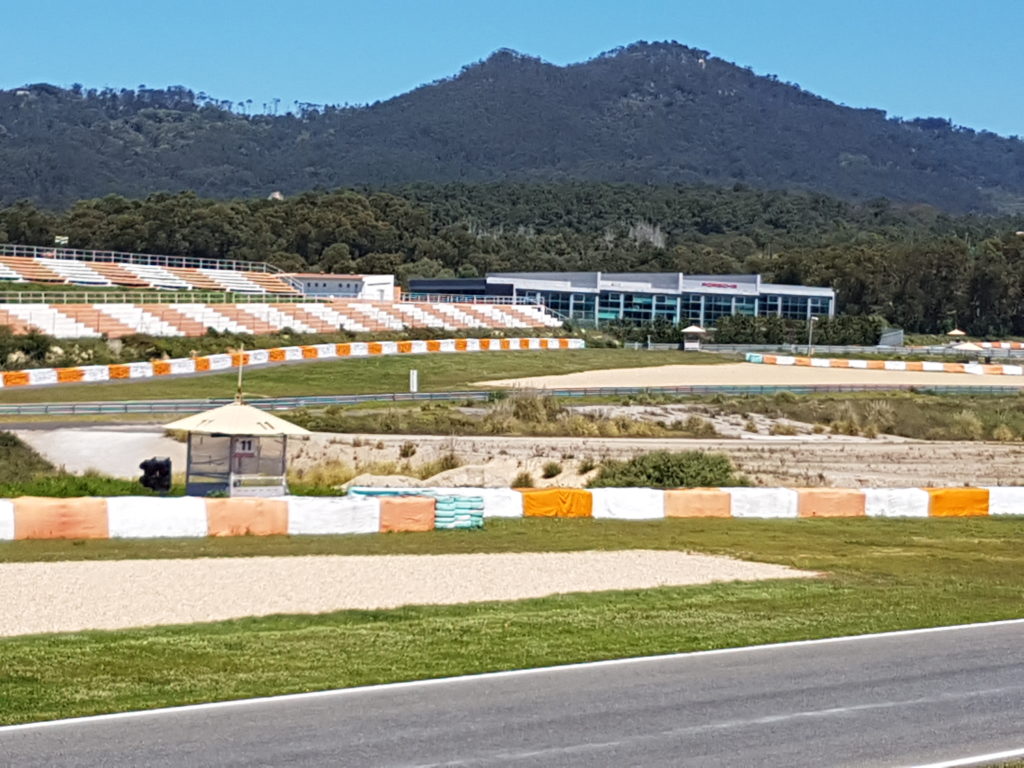This year’s host, CTT Portugal, made full use of the home advantage to claim first place at the 2018 IPC Drivers’ Challenge.
From April 17-18, the best postal drivers from across Europe competed against one another in a series of tasks designed to promote sustainable driving while also testing agility, speed and consistency.
This year’s event took place at the Autódromo do Estoril in sunny Portugal, famous for its affinity with the late Ayrton Senna and as the home of F1’s Portuguese Grand Prix from 1984 to 1996.
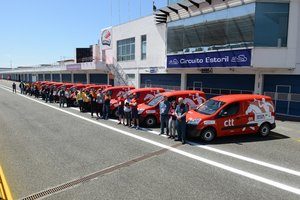 Participants from 11 teams took part in five challenges across two days, including a theory test, daily vehicle check and safety inspection, agility test, eco-driving challenge, and a new component for this year’s event – the electric driving efficiency and delivery test.
Participants from 11 teams took part in five challenges across two days, including a theory test, daily vehicle check and safety inspection, agility test, eco-driving challenge, and a new component for this year’s event – the electric driving efficiency and delivery test.
“As electric vehicles are gaining more and more ground in the postal sector, we deemed it necessary to integrate it in the competition,” explained Luis Paulo, director sustainability and environment, CTT Portugal Post. “For some drivers, it presented a new experience, to execute an entire delivery route in an electric vehicle, while others had already some experience and could advise their colleagues on how to perform better. This learning element in another key advantage of the IPC Drivers’ Challenge. Teams get the chance to discover new aspects of their jobs, and take this experience home to put into real-life practice.”
In spite of temperatures of more than 23ºC, the CTT team kept a cool head, posting the best times in the agility and eco-driving challenges to come out on top. They were closely followed by bpost’s MSO Transport team – runner-up at the last event in Spa in 2016 – with the 2016 winners, Posti Group, coming third.
Commenting on the CTT partnership, Holger Winklbauer, CEO at IPC, said, “CTT has been excellent to work with. The company participated last year and very modestly took note of bpost’s efforts at Spa-Francorchamps and was able to replicate the quality of event and perhaps even improve on things thanks to the wonderful weather. Now we have a new host and a new round to think about when considering future destinations.”
Show time
Now in its fifth installment, the IPC Drivers’ Challenge encourages postal organizations around the world to come together every 18 months and learn, apply and promote the best techniques and technologies in sustainable driving.
This year’s posts included An Post, Ireland; Correos, Spain; CTT, Portugal; Le Groupe La Poste, France; Posten Norge, Norway; Posti Group, Finland; PostNord, Sweden; and two teams each from bpost, Belgium, and PostNL, Netherlands.
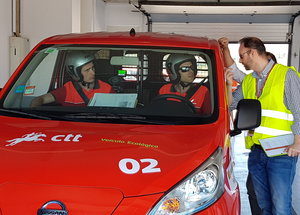 Each team puts forward two postal employees, a navigator and a driver, who switch places for various challenges. All participants are also paired with an experienced mentor with the necessary language skills to assist non-English-speaking teams.
Each team puts forward two postal employees, a navigator and a driver, who switch places for various challenges. All participants are also paired with an experienced mentor with the necessary language skills to assist non-English-speaking teams.
Day one kicks off with a briefing followed by four hours of practice sessions. The teams then end the day with a multiple-choice theory exam based on sustainability facts and figures and eco-driving techniques taught throughout the day. The results of the theory test account for 10% of the team’s overall score.
For the main event, the teams were split into two groups, with group B undertaking the eco-drive and agility test, and group A performing the electric delivery test and daily driver/safety checks. The tasks were then switched between the groups halfway through the day.
For the eco-drive, teams had to complete two laps of the track before switching drivers and completing another two laps. The team then heads out onto the local residential streets, again switching drivers halfway. Teams are deducted points for factors such as heavy acceleration and braking, which are monitored using a Frotcom telematics module attached to the delivery vans. Teams also lose points for any missed deliveries.
For the agility test, participants had five minutes to complete a slalom containing nine different hurdles. Some of the more challenging tasks included a reverse slalom and performing a 360° turn within a confined space. Drivers were assessed on the narrowest of margins and were docked points for additional time, seeking assistance and hitting the obstacles. Together, the two challenges contributed to 60% of the overall score.
Elsewhere, the three-part driver and safety check accounted for 10% of the overall score and involved undertaking a tire change in under seven minutes; performing daily driver checks such as monitoring tire pressure and oil; and completing a European Accident Statement.
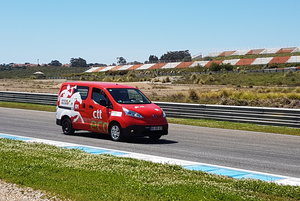 The newest component of the Drivers’ Challenge, the electric driving efficiency and delivery test, follows the same routine as the eco-drive, with four laps of the track and the drivers switching halfway. The team then headed out onto the local residential streets to perform a number of dummy deliveries. The scoring is based on the kilowatt-hour consumption measured by the onboard computer and the distance traveled. The number of correct deliveries is also taken into account. The electric driving test accounts for the final 20% of the total score.
The newest component of the Drivers’ Challenge, the electric driving efficiency and delivery test, follows the same routine as the eco-drive, with four laps of the track and the drivers switching halfway. The team then headed out onto the local residential streets to perform a number of dummy deliveries. The scoring is based on the kilowatt-hour consumption measured by the onboard computer and the distance traveled. The number of correct deliveries is also taken into account. The electric driving test accounts for the final 20% of the total score.
Commenting on the new electric vehicle test, Paul McMahon and Anthony Wall at An Post, said, “For us, the challenge with driving the diesel vans is mastering the gear stick being on the opposite side to what we’re used to. The electric vans pose a different problem as it’s all about how economically you can use them. You have to think ahead to avoid any unnecessary braking or power drainage.”
More than just a race
The IPC Drivers’ Challenge is an important event in the postal and logistics calendar and is highly anticipated by industry professionals, who enjoy the opportunity to interact and network with fellow peers. For delivery drivers, the event is seen as a chance to demonstrate their skills and celebrate, share and learn the latest techniques in sustainable driving. However, the event also serves as a vehicle to showcase the latest sustainable technologies and promote the sustainable efforts and benefits made by IPC’s member organizations.
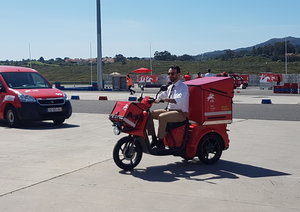 “As well as being something that’s nice to do, the event has quickly become an important way to engage in discussions around environmental sustainability and profitability,” explained Winklbauer. “The Drivers’ Challenge is part of IPC’s overall EMMS environmental program, and we are able to say that this program has saved our participating posts more than €400m (US$493m) on fuel in the past eight years and more than €1bn (US$1.2bn) in electricity over the same period. This includes posts in Brazil and South Africa.
“As well as being something that’s nice to do, the event has quickly become an important way to engage in discussions around environmental sustainability and profitability,” explained Winklbauer. “The Drivers’ Challenge is part of IPC’s overall EMMS environmental program, and we are able to say that this program has saved our participating posts more than €400m (US$493m) on fuel in the past eight years and more than €1bn (US$1.2bn) in electricity over the same period. This includes posts in Brazil and South Africa.
“The Drivers’ Challenge is important as it’s an engagement tool and represents the tip of the iceberg of a pyramid of activities, starting in the depot, before spreading regionally among employees and eventually going national, sometimes even international. It offers engagement and recognition for the postal workers, but it’s also about profitability for the posts, who at the end of the day look to save money. Being part of the IPC members group is one way to achieve these goals.”


